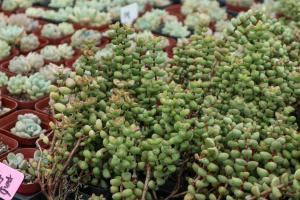Can Ceramic Pottery Planter Pots be Left Out Through Winter?
Ceramic pottery planter pots are a wonderful addition to any garden or home decor, but many gardeners wonder if they can leave them outside during the winter. With their fragile and delicate nature, ceramic pottery planter pots can be easily damaged by the freezing temperatures, snow, and ice that come with the winter season. In this article, we will explore whether it is safe to leave ceramic pottery planter pots outside during winter and what steps you can take to protect them if you do choose to leave them outside.
Understanding Ceramic Pottery Planter Pots
Ceramic pottery planter pots are made from clay and are fired at high temperatures to create a durable, waterproof container. They are a popular choice for gardeners due to their aesthetic appeal and versatility. However, they can be more fragile than other kinds of pots and containers, making them more susceptible to damage during cold weather.
The Risks of Leaving Ceramic Pottery Planter Pots Outdoors During Winter
During winter, ceramic pottery planter pots are at risk of cracking or breaking due to the freezing temperatures. Water inside the pot can freeze, expanding and putting pressure on the walls of the pot. Additionally, the weight of snow and ice can also cause damage to the pot, especially if it is left outside for an extended period. It is important to note that not all ceramic pottery planter pots are created equal, and some may be more durable than others. Low-quality ceramic pots may be more prone to damage during the winter.
What You Can Do to Protect Your Ceramic Pottery Planter Pots During Winter
If you choose to leave your ceramic pottery planter pots outdoors during winter, there are steps you can take to protect them from damage. One way is to cover the pot with a material that will insulate it, such as burlap or a plastic cover. This can help to prevent water from freezing, keeping your pot and its contents safer. Additionally, you can move your planter pots to a more sheltered area or bring them indoors if possible. This can help to protect them from the effects of snow and ice.
Conclusion
In conclusion, leaving ceramic pottery planter pots outdoors during winter can be risky. Due to their fragile nature, they are more susceptible to damage from freezing temperatures, snow, and ice. However, if you choose to leave them outside, there are steps you can take to protect them, such as covering them with insulating materials or moving them to a more sheltered area. Ultimately, the decision to leave your ceramic pottery planter pots outside during the winter season depends on your individual circumstances and the quality of the pot itself.

 how many times do yo...
how many times do yo... how many planted tre...
how many planted tre... how many pine trees ...
how many pine trees ... how many pecan trees...
how many pecan trees... how many plants comp...
how many plants comp... how many plants can ...
how many plants can ... how many plants and ...
how many plants and ... how many pepper plan...
how many pepper plan...































